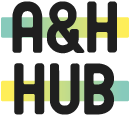Join artists Daniel Regan and Camilla Ellingsen Webster in this practical cyanotype workshop that takes you from the history of the process through to coating your own papers and making your own unique images rich with Prussian blue toning.
Cyanotypes are made using a photographic printing process, without a camera, that produces rich Prussian blue images. These images are made through the use of two chemicals: ferric ammonium citrate and potassium ferricyanide. The process was created by Sir John Herschel, then later popularised by botanist and photographer Anna Atkins.
In the Workshop:
In this workshop you’ll begin by meeting the artists and other participants at a local park to individually collect organic plant matter, botanicals and natural elements as specimens for your first cyanotypes. You can bring your own items too (see below). We’ll then head back to the Arts & Health Hub HQ a short walk away, where you will:
Learn about the history of the cyanotype process, including key artists that have used this process with examples;
Experiment with using pre-treated papers (provided by us) to create your first images;
Learn how to mix chemicals and coat your own papers (chemicals and paper provided). Once dry, you’ll be able to use these in the session to make more images or take them home to experiment further.
You will create your prints in our beautiful studio in South London, exposing your prints out on our large studio roof terrace.
What to Bring:
All cyanotype materials are provided: pre-coated papers, cyanotype chemicals, plain paper (up to A4). You should bring an envelope or folder to take your work away in.
Refreshments (tea, coffee, soft drinks) are provided.
Feel free to bring objects to experiment with. Flat objects work best - the process highlights the outline of an object, which is why flat botanicals work well. Thin fabrics such as netting can create dreamy soft images. You can also use negatives from a roll of camera film. Feel free to experiment with all sorts!
About Daniel Regan
Daniel Regan is a visual artist and Director of the Arts & Health Hub. His photographic works specialise in exploring complex and difficult emotional experiences, focusing on the transformational impact of arts on mental health, building on his own lived experience. Daniel explored cyanotypes and other cameraless techniques in his personal project I’ll Be Seeing You, made over a 10 month period, navigating the death of his mother, Teena.
About Camilla Ellingsen Webster
Camilla Ellingsen Webster is a photography curator, researcher and teacher; her interests are in the history of photography, with a particular focus on appropriation in photographic art. Camilla has worked with Dulwich Picture Gallery, The Courtauld Institute of Art and the London Festival of Photography, as well as assisting artists such as Joachim Schmid with projects. Camilla is a member of the Kemptown Artist’s Association, where she volunteers as an exhibitions coordinator and membership secretary.
You can find Camilla's latest community project here and her personal work here.
About the Venue
Arts & Health Hub HQ is located in a beautiful, bright and colourful studio, 10 minutes walk from Peckham Rye station which is on the Overground line and served with trains from London Bridge and London Victoria (10 and 15mins respectively). The studio is on the first floor without a lift which sadly means this venue is not wheelchair accessible. You can see photos of the lovely bright & colourful space below.
Spaces are limited to 9 participants.
Questions etc
If you have any questions about this workshop please contact info@artsandhealthhub.org.
Cost.
£50
Refund Policy
Tickets to this event are non-refundable. Arts & Health Hub is a small non-profit organisation without on-going support for core costs / staff. We have to calculate costs for each event to make it financially viable for the organisation and those delivering the work, meaning that if each space isn't filled we may not be able to run some events or make it financially viable to deliver the event.







